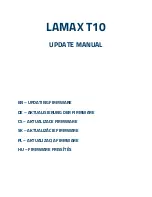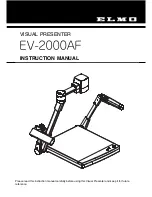
The sheet film adapter permits single exposures on sheet film (**). A wide range of emulsions is available.
Black-and-white Film
This produces a negative in which the colours and brightness range of the subject are translated into black and white. From it, prints
or enlargements on paper or black-and-white transparencies can be made.
The black-and-white film used normally is panchromatic; that means that it is sensitive to all colours. A few emulsions still on the
market are orthochromatic, i.e., not sensitive to red. There is a choice of several types differing mainly on sensitivity as well as certain
other characteristics.
SLOW FILMS are of low sensitivity, requiring comparatively great exposure. Their main advantage is the extremely fine grain,
permitting a high degree of enlargement without its granular structure becoming unpleasantly visible. Such films also yield images of
the greatest sharpness. On the other hand, these slow films are not very suitable for coping with fast movement in other than
exceptionally good lighting, nor for general work in poor light. Such films are rated at 40-80 ASA or 17-20 DIN.
MEDIUM SPEED FILMS still yield a reasonably fine grain with good gradation, They are the most suitable material for all-round
photography. other than in poor light. These films are rated at 100-160 ASA or 21-23 DIN.
FAST FILMS with somewhat coarser grain (still acceptable for reasonable degrees of enlargement) will cope with most light conditions
including poor light and interiors in favourable conditions. This is the right film for the photographer who wants to be prepared for the
unusual, to arrest fast movement with high shutter speeds, and to take shots in poor light. The speed are 200-400 ASA or 24-27 DIN.
ULTRA FAST FILMS are primarily intended for highspeed sports shots in dull weather, interior snapshots in poor light, night
photography and ill-lit stage pictures. These films are specialist types for conditions where normal materials are totally inadequate. The
high speed is achieved at some cost in definition and graininess. Speed ratings range from 500-1,300 ASA or 28-32 DIN.
The above speed figures are based on the latest ASA Standard for film speeds (and on the BC and DIN Standards under revision).
These figures, when used on the exposure meter, give minimum correct exposures, to make the most of the versatility of the film and
of the image quality. They are also the figures quoted by most film manufacturers. Sometimes films are, however, still rated according
to earlier standards which, in effect, incorporated a generous safety factor against underexposure - by the simple process of
overexposing films about 100 per cent (well within the exposure latitude of most black-and-white films). So you may come across
films apparently only half as fast as others of similar type, because of this difference in ratings. The table on page 68 indicates the
current fiim speeds to be used with the exposure meter, even if the film packing gives a lower rating.
This applies to black-and-white negative materials only; speed rating methods have not changed for colour films.
There is a wide range of different makes of films in all speeds on the market. Their characteristics, apart from speed, vary slightly
from make to make. It is safe to say that all well-known brands are reliable and good. The best film is the one you are used to.
Professional photographers and advanced amateurs may find one or the other characteristic of a particular make, i.e., its gradation,
granular structure, acutance etc., of particular value for specific jobs.
FILM SPEED, CONTRAST, GRAIN, RESOLVING POWER
Generally speaking, low speed goes with greatest contrast, finest grain, and highest resolving power, and vice versa. The film speed
in the top row points to the corresponding contrast, grain and resolving power. The contrast row (from left to right) shows how
high contrast becomes medium and low with the faster films. The grain row shows (from left to right) how fine grain becomes
progressivly coarser with increasing speed, while the resolving power row indicates the gradual decrease in maximum resolution
with the fastest films. The bottom row indicates the type of subject for which films of the various speeds are best; copying (special
document films), general views and pictures of people (fine grain and medium speeds films), high-speed action (high-speed films)
and poor light conditions (ultra-speed films).
www.mr-alvandi.com
Summary of Contents for 1000 F
Page 18: ...WILD LIFE www mr alvandi com ...
Page 52: ...THE CUT FILM ADAPTOR www mr alvandi com ...
Page 54: ...Daylight Exposure Values www mr alvandi com ...
Page 55: ...Filters for Black and White Film www mr alvandi com ...
Page 59: ...Close Ranges with 50 60 mm Distagon and Planar 80 mm www mr alvandi com ...
Page 60: ...Close Ranges with 120mm S PLANAR 150 200 mm SONNAR www mr alvandi com ...
Page 62: ...Conversion of Film Speed Systems Colour Films www mr alvandi com ...
Page 63: ...Black and White Films www mr alvandi com ...
Page 64: ...www mr alvandi com ...














































